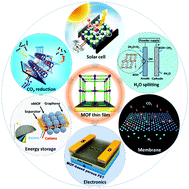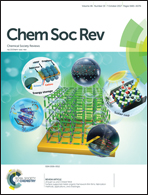Surface-supported metal–organic framework thin films: fabrication methods, applications, and challenges
Abstract
Surface-supported metal–organic framework thin films are receiving increasing attention as a novel form of nanotechnology. New deposition techniques that enable the control of the film thickness, homogeneity, morphology, and dimensions with a huge number of metal–organic framework compounds offer tremendous opportunities in a number of different application fields. In response to increasing demands for environmental sustainability and cleaner energy, much effort in recent years has been devoted to the development of MOF thin films for applications in photovoltaics, CO2 reduction, energy storage, water splitting, and electronic devices, as well as for the fabrication of membranes. Although existing applications are promising and encouraging, MOF thin films still face numerous challenges, including the need for a more thorough understanding of the thin-film growth mechanism, stability of the internal and external interfaces, strategies for doping and models for charge carrier transport. In this paper, we review the recent advances in MOF thin films, including fabrication and patterning strategies and existing nanotechnology applications. We conclude by listing the most attractive future opportunities as well as the most urgent challenges.



 Please wait while we load your content...
Please wait while we load your content...